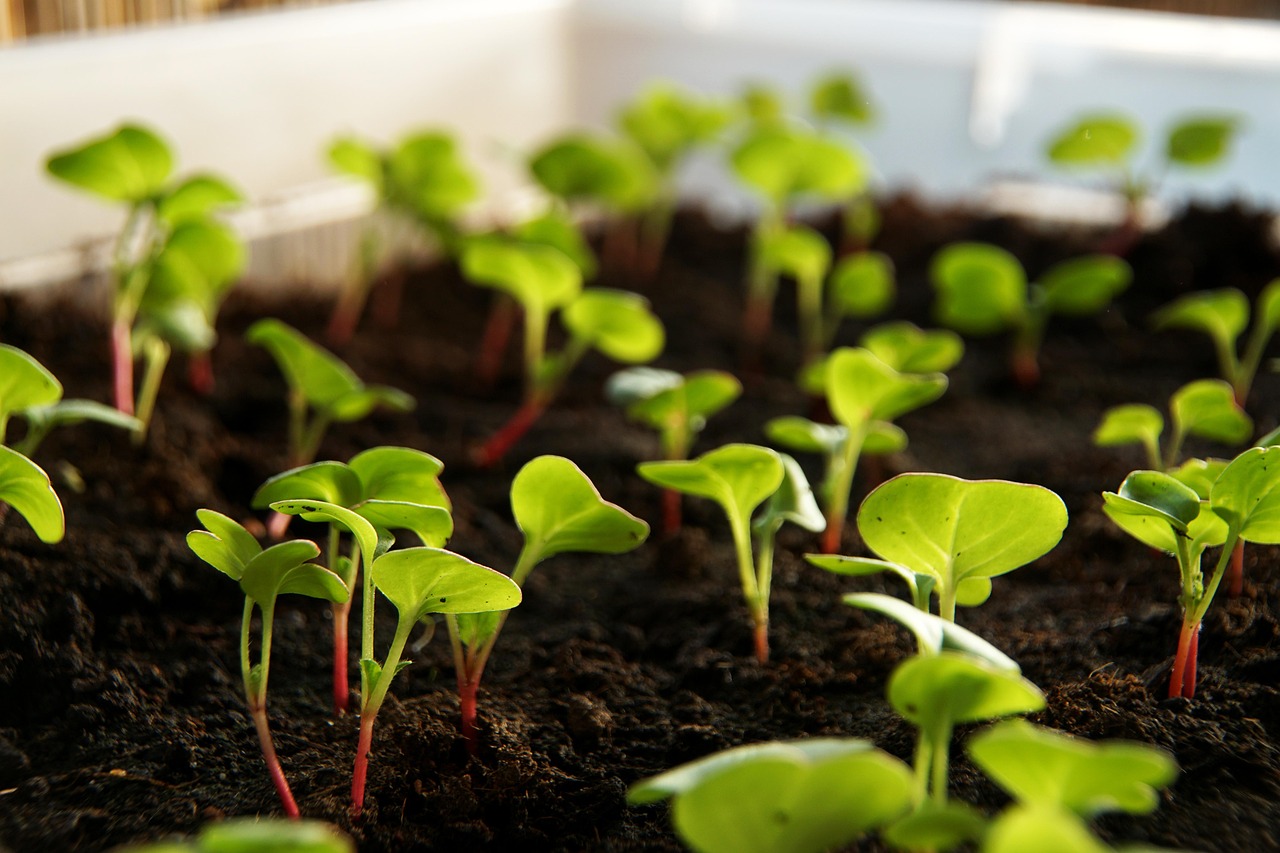Depending on where you live, May can mark the point where you transition from cool-weather crops to summer favorites. Here, we will explore the best seeds for planting in May, broken down into three categories: vegetables, flowers, and herbs. Each section provides details on when to plant these seeds, their temperature tolerances, and tips for successful gardening.
Vegetables To Plant
May is an excellent time to sow a range of vegetables that thrive in warmer temperatures, as the threat of frost begins to diminish. Below, discover twenty vegetables ideal for planting in May, categorized by USDA zones.
Tomatoes
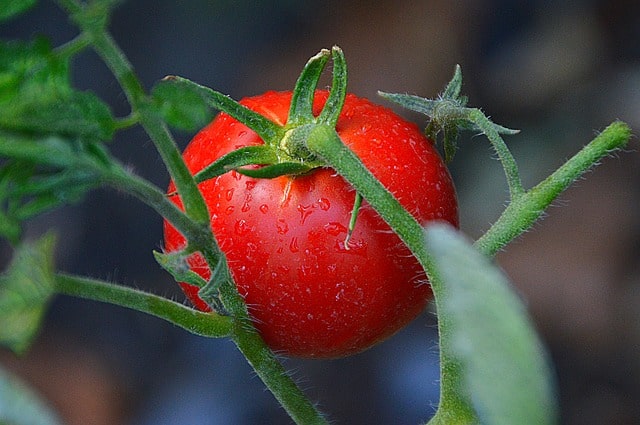
Tomatoes are a beloved staple for home gardeners. They thrive in USDA Zones 3-10, making them a versatile choice. Plant tomato seeds indoors in early April for transplanting outdoors after the last frost. Transplant when nighttime temperatures consistently remain above 50°F; ideally, daytime temperatures should be 70°F or higher.
For optimal growth, ensure your soil is rich in organic matter, such as compost, to set up an environment conducive to healthy tomato plants. Tomatoes require staking or cage support, as they can grow quite tall and produce heavy fruit. Regular watering, particularly when fruits start to develop, is essential for preventing blossom end rot—a common disorder caused by calcium deficiency.
Peppers

Sweet and hot peppers do exceptionally well in warm weather, making May ideal for planting in Zones 4-10. They prefer full sun and well-draining soil, and like tomatoes, should be started indoors about 8-10 weeks before the last expected frost before moving them into the ground. The key is to ensure nighttime temperatures remain over 55°F consistently.
Fertilizing with a balanced fertilizer can enhance growth, particularly nitrogen-rich types. When watering, allow the soil to dry slightly between waterings to prevent root rot. Pepper plants may also benefit from heat mats indoors to ensure consistent germination rates.
Cucumbers
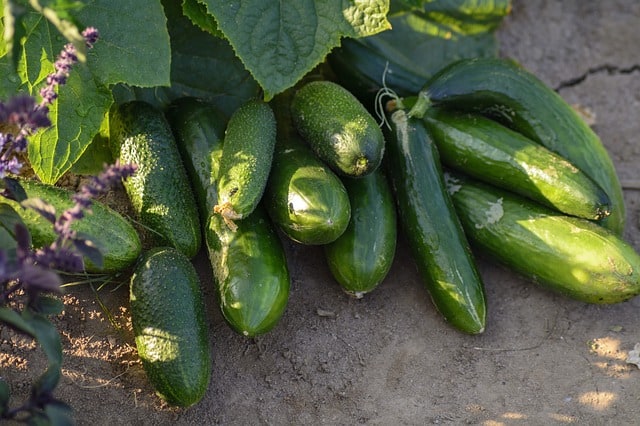
Cucumbers can be directly sown into the garden in Zones 3-10 by late May, making them an excellent option when soil temperatures reach approximately 70°F. They grow rapidly and require ample water along with a support structure, such as a trellis, to keep fruits off the ground, reducing disease risk. Cucumbers are susceptible to pests like cucumber beetles; regular monitoring and planting companion plants can deter these pests.
Spacing seeds or seedlings properly—usually around 18 to 36 inches apart depending on the variety—will promote airflow and reduce fungal diseases, an essential consideration to ensure fruitful growth throughout the summer.
Zucchini
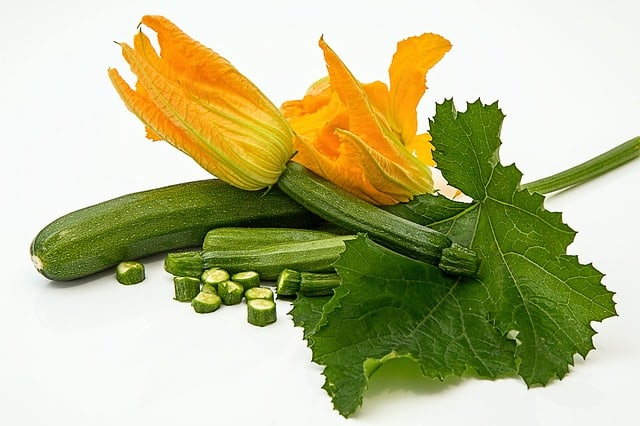
Zucchini, a summer squash, grows rapidly and can be planted in Zones 3-10 in mid to late May. To promote healthy growth, ensure the soil is well-draining and rich in organic matter to help retain moisture. Seeds germinate best when soil temperatures are around 60-85°F.
Zucchini can often produce an overwhelming yield; quindi, succession planting every couple of weeks can help manage the harvest without overwhelming you. Because zucchini plants grow fairly large, give them ample space, around 24 inches apart, to avoid shading and prevent disease caused by dampness.
Beans
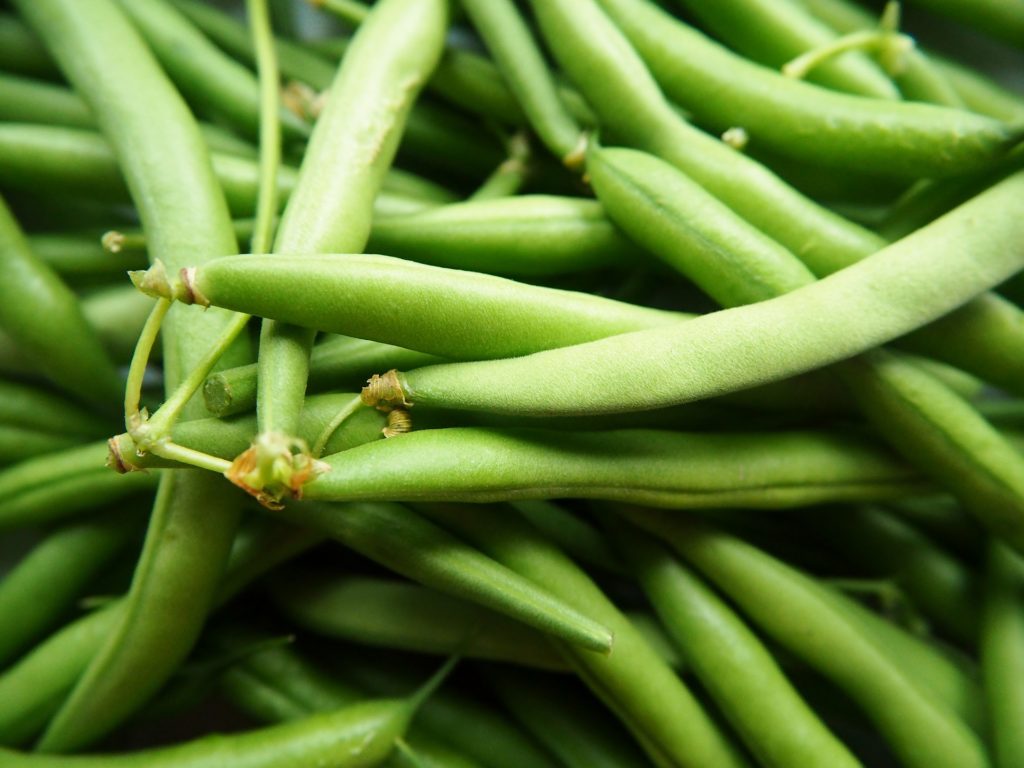
Plant both bush and pole beans in May, suitable for Zones 3-10. These legumes thrive in warm soil (at least 60°F). Beans naturally fix nitrogen in the soil, making them a great addition to a crop rotation plan, improving soil health for subsequent plantings.
Beans germinate best in well-draining soil that has warmed up adequately, and they perform poorly in cold soil. Provide a trellis for pole beans to allow them to climb and take advantage of vertical space. Regularly checking for pests like aphids is advisable, as they can quickly damage your plants.
Carrots
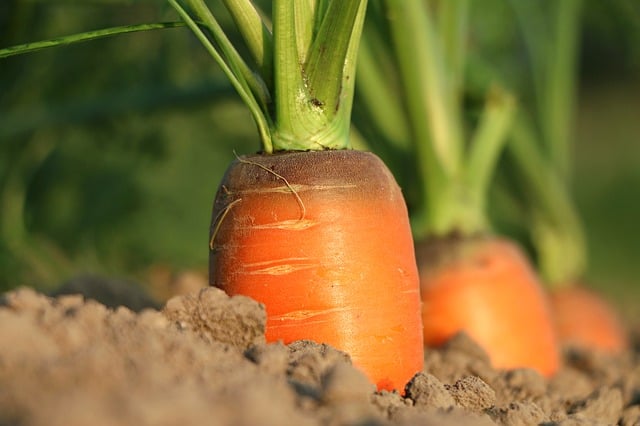
Carrots can be sown early in the spring, but May is the ideal time for succession planting to ensure an extended harvest period. They grow well in Zones 3-10 and prefer soil temperatures between 55°F to 75°F, making May an advantageous month. Ensuring the soil is loose and free of large clumps is crucial for root development, as they require space to grow downward.
Regular watering is necessary, especially during germination, which can take 10-20 days. Mulching around carrot seedlings can help retain moisture, suppress weeds, and maintain even soil temperature.
Beets
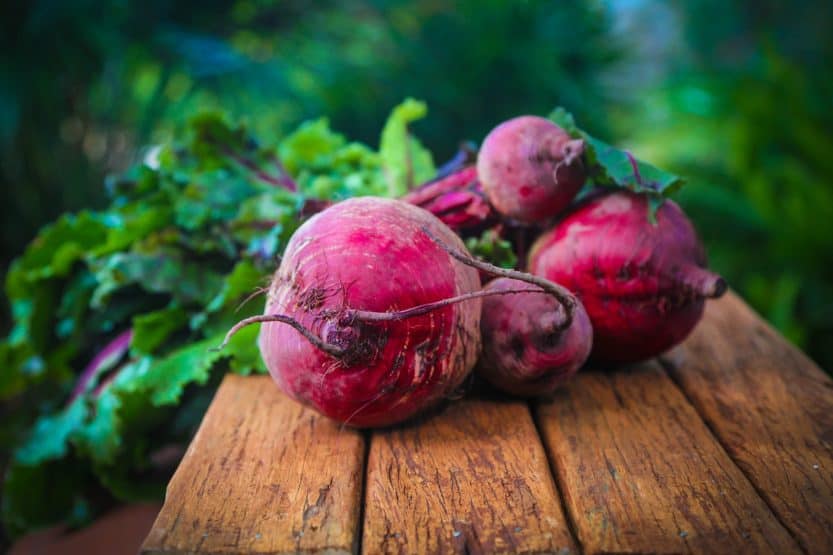
Beets are adaptable and can be planted in May across Zones 3-10. They prefer soil temperatures around 50°F to 85°F and benefit from fertile, well-drained soil. Adequate spacing (about 3-4 inches apart) is essential for the bulbs to develop properly without crowding.
Beets can also be harvested at a variety of sizes—tiny baby beets are delicious roasted or pickled, while larger ones can be used in salads and soups. To prevent bolting, ensure they are not stressed by overheating or drought; consistent watering is key.
Radishes
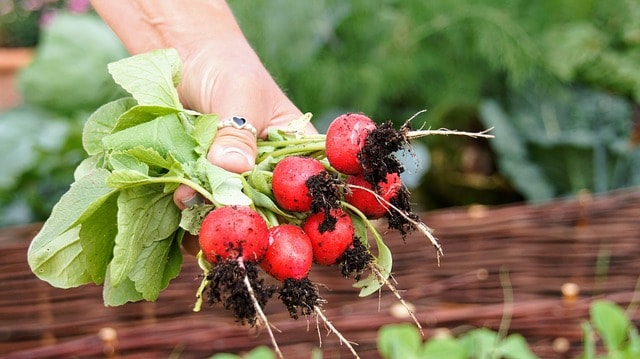
Radishes grow quickly and are perfect for a late spring sowing in all zones. They can be harvested just a few weeks after planting when the soil temperature is at least 45°F. Radishes are commonly grown as a quick crop alongside slower-growing vegetables, as they mature in 3-4 weeks.
Sow radish seeds directly into well-tilled soil for rapid germination. Consider planting them in succession throughout the month to enjoy fresh crops continually. Their leaves are edible too and can be used in salads or pestos, increasing sustainability in your gardening practices.
Corn
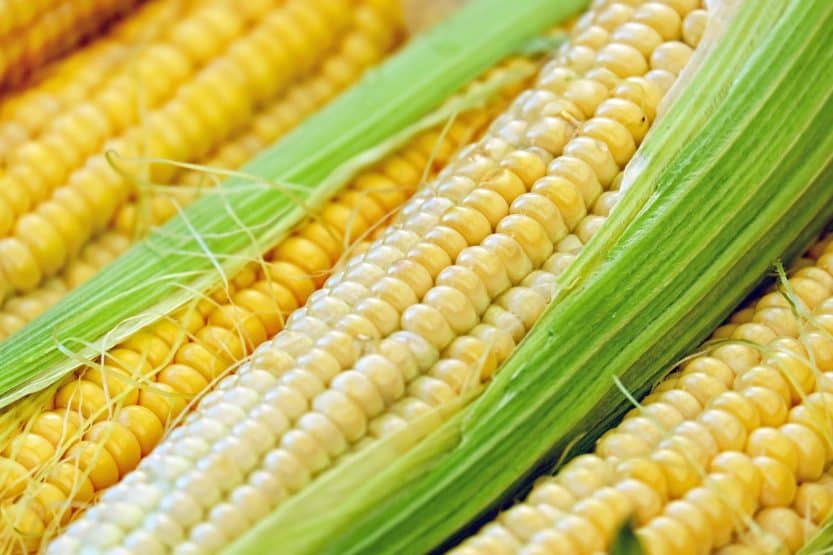
Sweet corn grows best when planted in Zones 3-10 in May. This plant demands full sun and benefits from rich, well-drained soil with plenty of organic matter. Corn prefers soil temperatures of at least 60°F for optimal germination.
Companion planting with beans and squash can promote synergistic growth known as the “Three Sisters” planting method, which utilizes space effectively and enhances pest resistance. Ideally, plant multiple rows in blocks rather than single rows to facilitate proper pollination, increasing ear production.
Squash
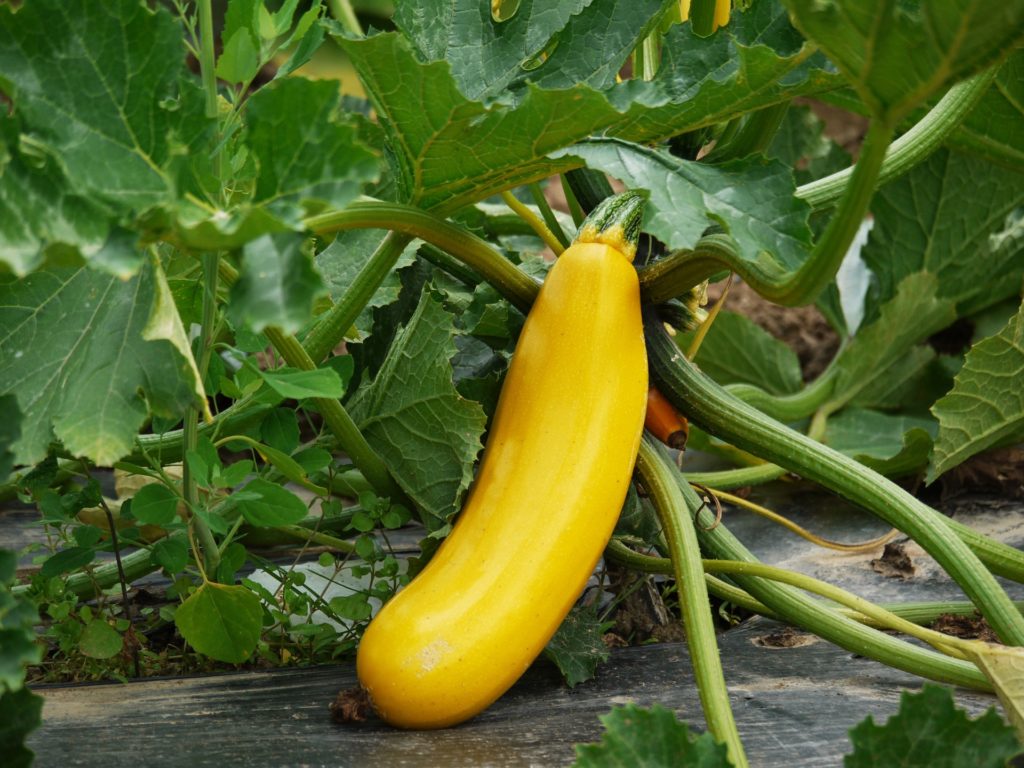
Summer squashes like yellow squash thrive in Zones 4-10 and should be sown directly in the soil after the danger of frost has passed, with soil temperatures ideally above 60°F. Squash grows fast and may require support, depending on the variety—trailing or vining types often need trellises.
Watering consistently is essential, as squash has high water requirements; aim to keep the soil evenly moist but not waterlogged while watching for pests like squash bugs and vine borers. Crop rotation between seasons can help minimize pest and disease build-up.
Sweet Potatoes
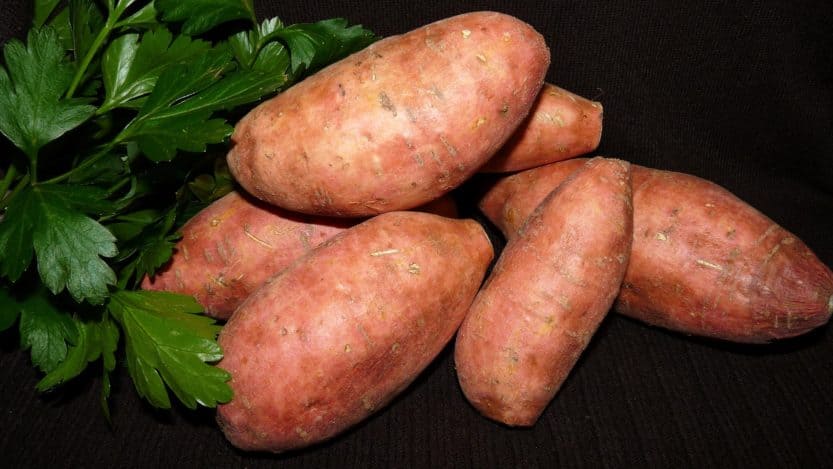
Sweet potatoes thrive in warm weather and should be planted mid to late in May in USDA Zones 8-10. It is essential to plant “slips” or small rooted shoots rather than seeds, as sweet potatoes are grown vegetatively. The soil should be well-drained, rich, and warmed up to at least 65°F for successful growth.
Consistent watering is also essential for establishing healthy plants. Sweet potatoes are generally resistant to pests but monitoring for signs of soil nematodes or fungal infections is advisable.
Eggplant
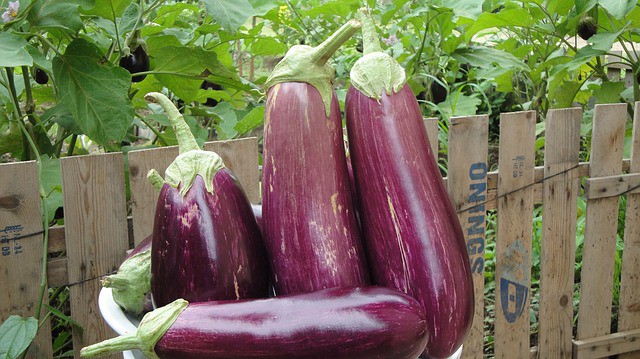
Eggplant loves the heat and can be planted in Zones 4-10. Start seeds indoors in early April and transplant after the last frost when soil temperatures remain consistently above 70°F. Eggplants thrive best in sunny, loamy soil conditions, which helps them develop their fruits.
Look for pests such as aphids and the infamous Colorado potato beetle when monitoring your plants. Additionally, mulching can help maintain soil temperatures and moisture levels throughout the summer growing season while minimizing weed competition.
Broccoli
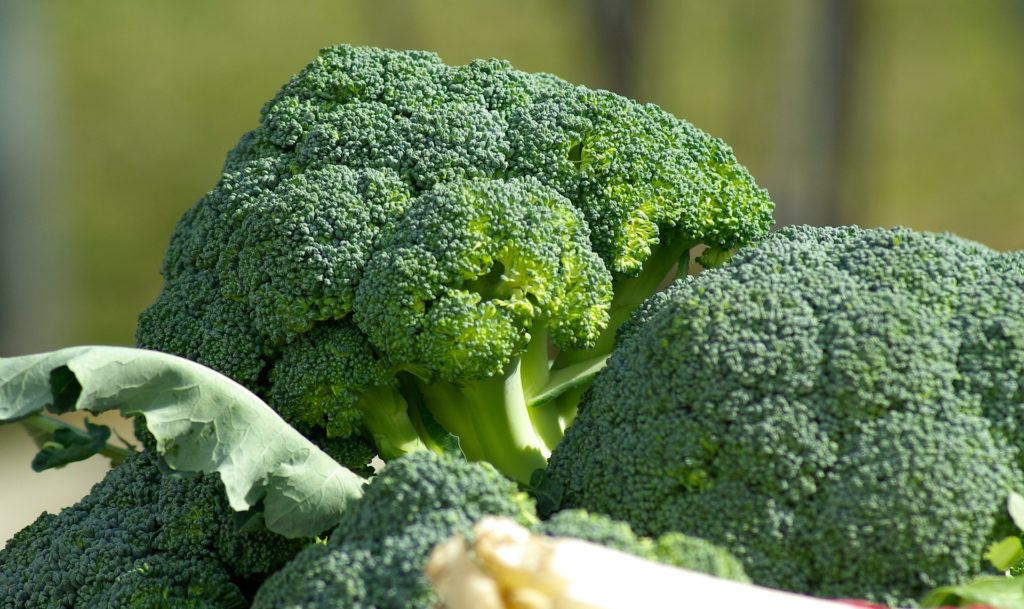
Broccoli is a cool-weather crop, and while traditionally planted earlier in the spring, it can still be sown in May in Zones 5-10 with specific varieties. It prefers temperatures between 60°F and 70°F; planting during early May can yield a fall harvest.
Soil should be rich in organic matter, and high nitrogen fertilization will facilitate large heads. However, regular watering is essential, as broccoli is water-sensitive during head development. Keeping mulch around the plants helps maintain moisture and suppress weeds.
Okra
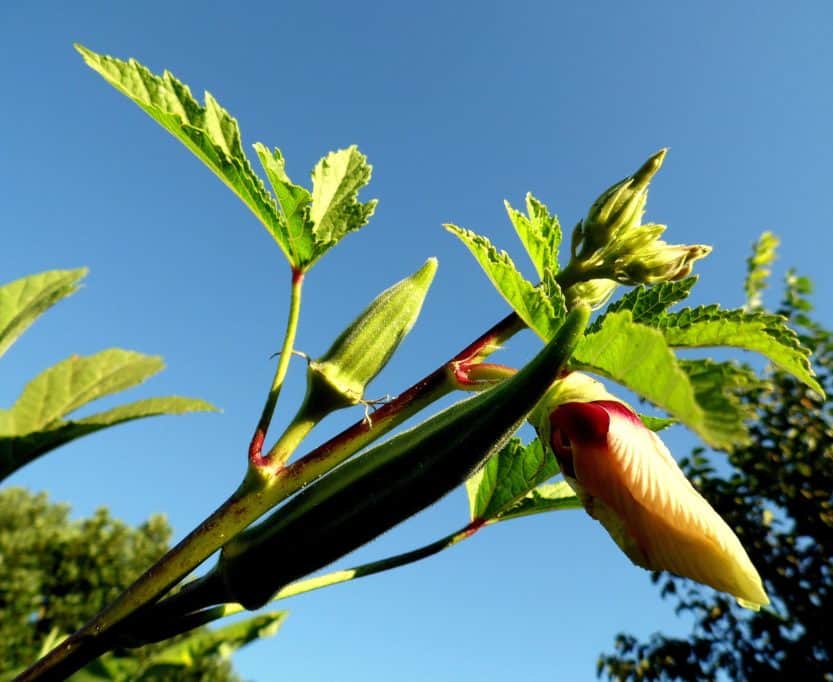
Okra, a southern favorite, can be planted in Zones 8-10 in May. This warm-season crop thrives in hot temperatures, ideally above 70°F. Choose a sunny location with well-draining soil to ensure flowering and productive pod growth.
Regular harvesting is crucial, as okra plants can become woody if pods are left too long, negatively affecting the harvest. Fertilizing with a balanced fertilizer every few weeks can also boost production, along with consistent watering but avoiding waterlogged conditions.
Cauliflower
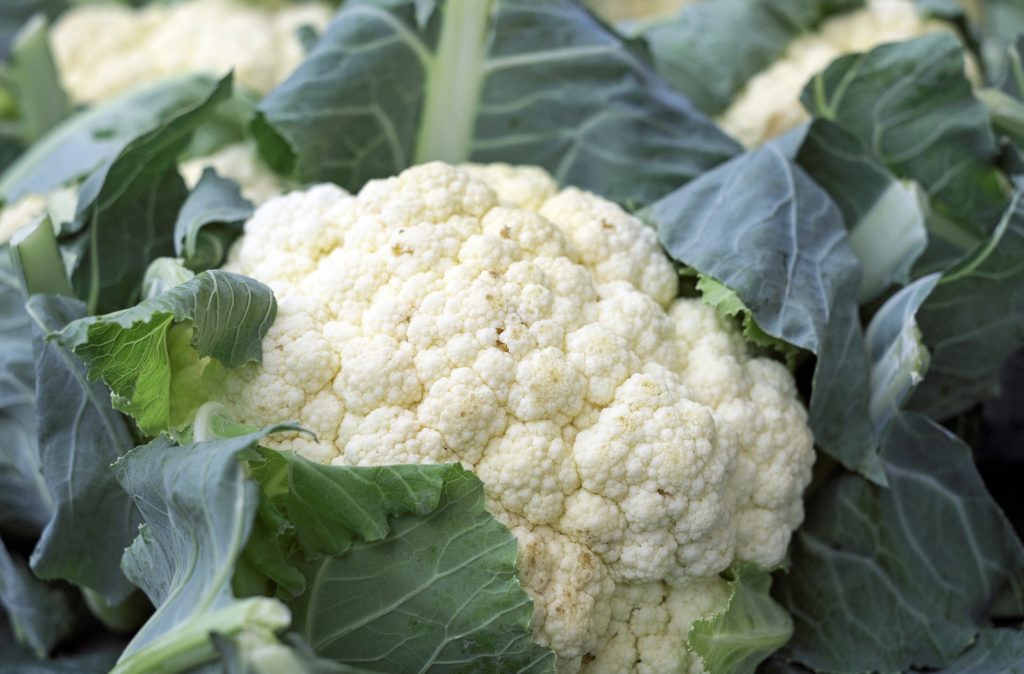
Cauliflower prefers cooler weather, best suited for planting in early spring, but some varieties can be sown in Zones 5-10 in late May. They thrive in temperatures between 60°F and 70°F and require nutrient-rich, well-draining soil.
Regular monitoring for pests is necessary during the growing season, as aphids, cabbage worms, and thrips can decimate crops. Additionally, consistent watering is key to prevent bolting and assure head growth.
Melons
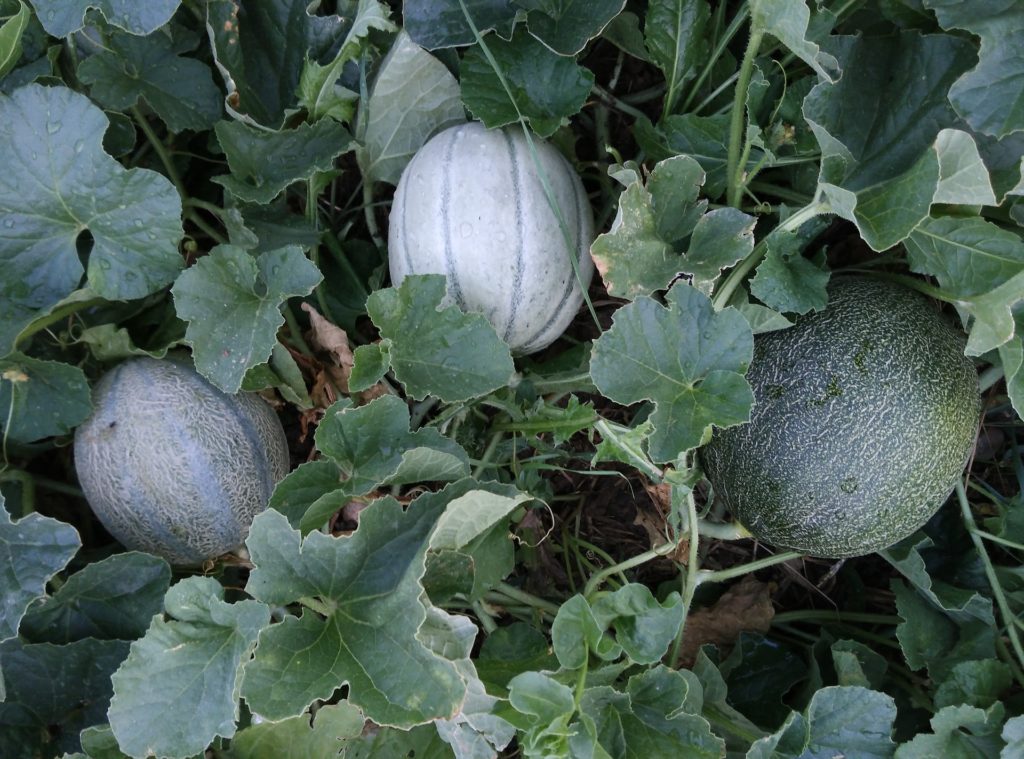
Cantaloupe and watermelon seeds should be planted in late May once the soil temperature reaches at least 70°F. Melon plants thrive in Zones 4-10, needing full sun and warmth to develop sweet fruits.
Prepare your soil by adding compost to increase nutrients and drainage—melons do not like to have “wet feet,” as poor drainage can lead to root rot. The plants also benefit from pollination; consider planting flowers nearby to attract bees.
Asparagus
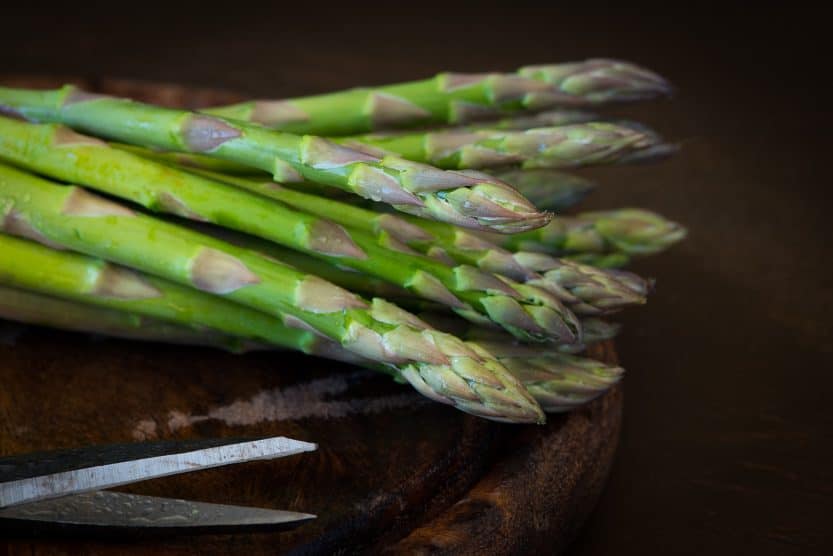
Asparagus crowns are best planted as early as April in Zones 3-7. However, newly established beds often add shoots in May. Preparations should include the planting area tilled and enriched with organic compost.
Follow up with consistent watering until established, and remember that asparagus is a perennial crop, offering harvests for many years once established. Properly mulching around asparagus beds helps control weeds and conserve moisture.
Brussels Sprouts
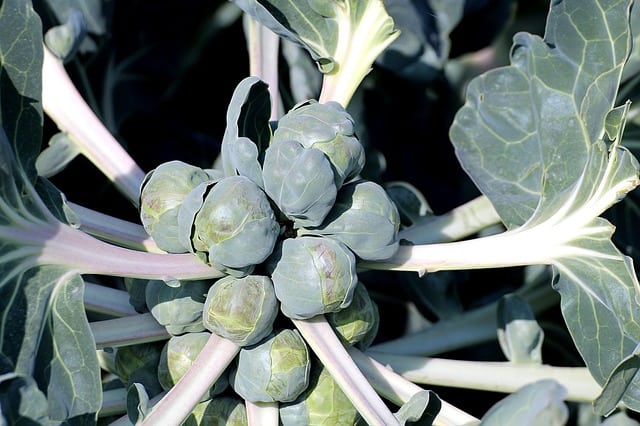
Brussels sprouts can be sown during May in Zones 5-10, preferring cool conditions for proper head development. They do best when planted in fertile, well-drained soil that offers rich nutrients.
Regular watering will help prevent stress within the plants, which can cause bitterness in the sprouts. Keeping a close watch on leaf damage from pests like aphids and caterpillars is essential, as these can significantly hinder growth.
Swiss Chard
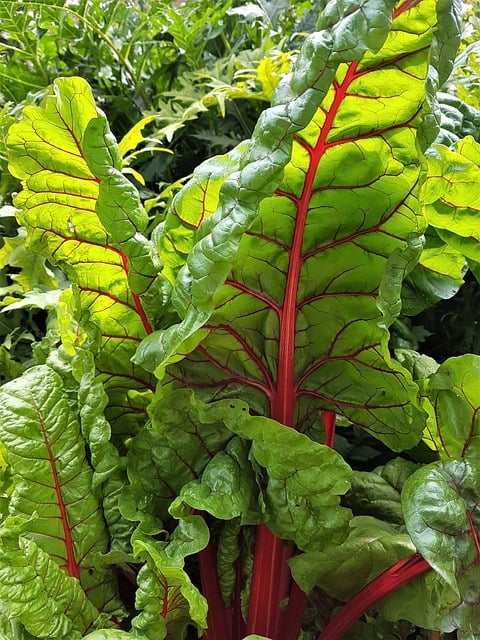
Swiss chard is incredibly tolerant and can be planted across a range of zones, including 3-10, throughout May. This leafy green prefers temperatures between 50°F to 75°F and thrives in fertile, moist soil.
Swiss chard is also an incredibly diverse crop; its flavorful leaves can be used in salads or cooked. A practical tip for growing Swiss chard is to keep it spaced adequately, about 12 inches apart, to ensure ample light and air for optimal leaf development.
Onions
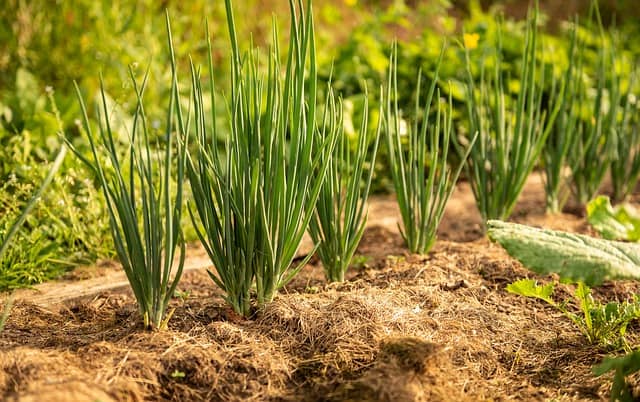
May is a prime time to transplant onion sets across USDA zones. These can be planted as soon as the soil is workable and preferably after the threat of frost passes. They thrive in full sun with well-drained, fertile soil, requiring 6-8 hours a day of sunlight for robust growth.
Consistent watering is vital; keep soil moist but not sodden to prevent rot. Depending on the variety, consider timing your harvest for green onions or leaving them to mature into larger bulbs.
Flowers To Plant
May is one of the best months for planting flowers, as the risk of frost has significantly diminished. Flowers add color and vibrancy to your garden, enhancing its aesthetic appeal. Below are twenty flowers ideal for planting in May according to their respective USDA zones.
Sunflowers
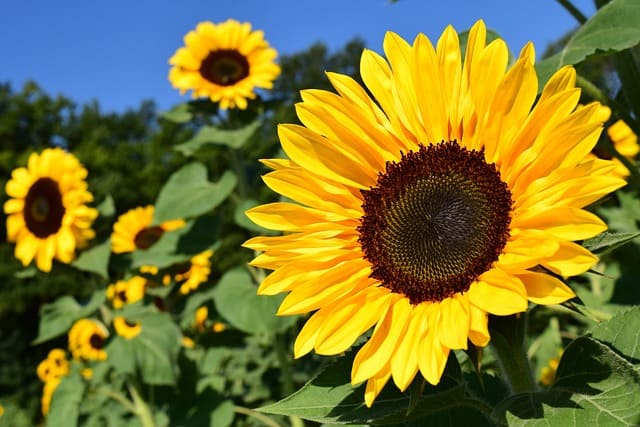
Sunflowers, easily recognizable for their tall stems and large heads, thrive in Zones 3-10. They prefer full sun and can be directly seeded into the garden after the last frost. Ensure to plant them in nutrient-rich, well-draining soil to set the foundation for robust growth.
Due to their height, providing sufficient space between plants is essential—typically 12 to 24 inches apart. This spacing not only allows for proper sun exposure but also helps with air circulation to reduce the risk of disease. Regular watering during dry spells is crucial, particularly when they begin to flower.
Zinnias
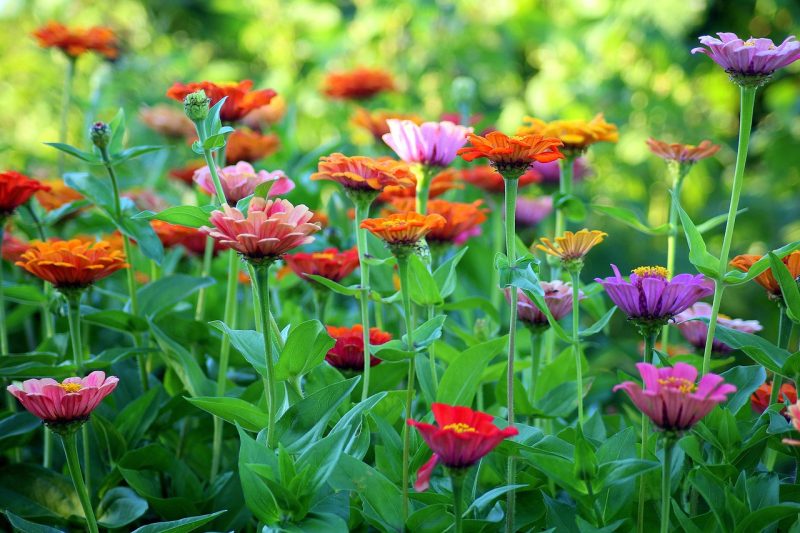
Zinnias bloom vibrantly in mid-spring and are perfect for planting in USDA Zones 3-10. They thrive with full sun and can be directly seeded into gardens when soil temperatures reach around 60°F. These flowers come in an array of colors and attract pollinators, enhancing biodiversity.
For optimal results, space zinnia seeds about 12 inches apart. Regular deadheading encourages continued blooming throughout the summer, while avoiding overwatering helps prevent fungal diseases, ensuring healthy plants.
Marigolds
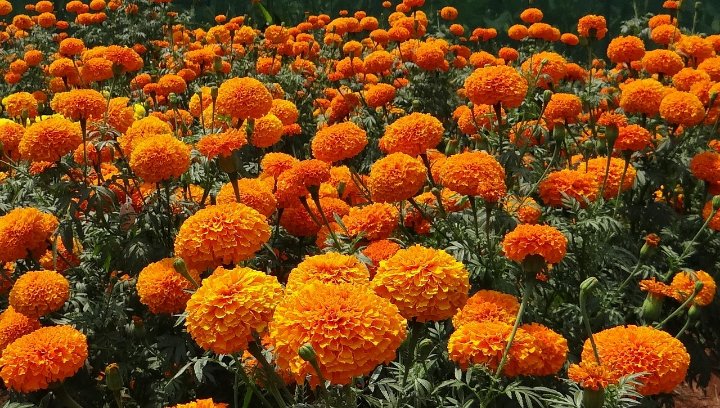
These cheerful annuals thrive in warm weather, making May ideal for planting in Zones 3-10. Marigolds are resilient and usually flourish with full sun and well-draining soil, making them perfect for borders and garden beds.
To maintain their blooming, cut back spent flowers regularly. Additionally, marigolds can deter harmful pests, making them excellent companion plants in the garden as they repel nematodes and aphids.
Cosmos
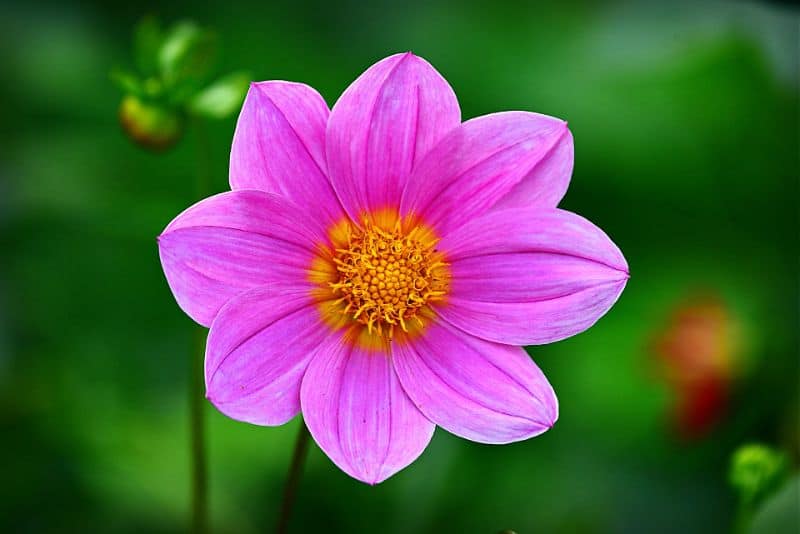
Cosmos are hardy flowers that can be sown directly into the garden in Zones 3-10. They require daily sun and prefer temperatures around 70°F for optimal growth. Their airy, daisy-like blooms come in various colors and can attract beneficial insects.
For best results, sow seeds directly in the soil 12-18 inches apart and keep them weed-free to ensure they flourish during their growing season. Cosmos are drought-tolerant once established, thus requiring minimal maintenance.
Petunias

Petunias are popular for containers and flower beds, flourishing in warm temperatures found in Zones 3-10. Plant once the chance of frost has passed, and ensure consistent moisture as they mature.
Consider pinching back leggy growth regularly to encourage branching, which leads to more flowers. Petunias come in various forms, from compact varieties perfect for pots to trailing types that cascade beautifully down hanging baskets.
Snapdragon
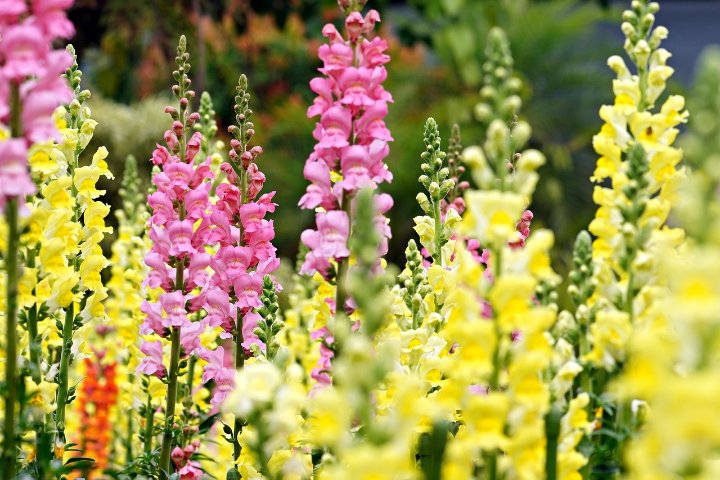
Snapdragons are a cool-season annual that can be planted in May in Zones 3-9. They tolerate a variety of conditions but prefer well-drained soils. Expect bright spikes of color in your garden from early summer to fall.
Regular deadheading of spent flowers ensures a longer blooming period. Snapdragons thrive best in rich soil and might require staking to support taller varieties when grown in wind-prone areas.
Pansies
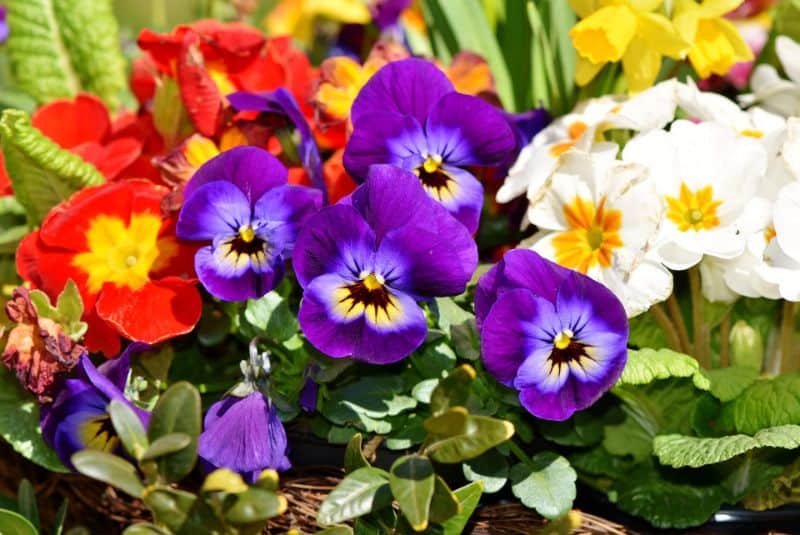
While pansies are typically planted in early spring, May can still be a good time to plant new ones in cooler regions or for late-season displays. They thrive in cooler temperatures, making them suitable for Zones 3-8.
Make sure to select varieties that resist heat if summer temperatures tend to rise. Regular watering and fertilizing will offer vibrant blooms throughout the season. Pansies also do well in partial shade, making them versatile in garden design.
Nasturtiums
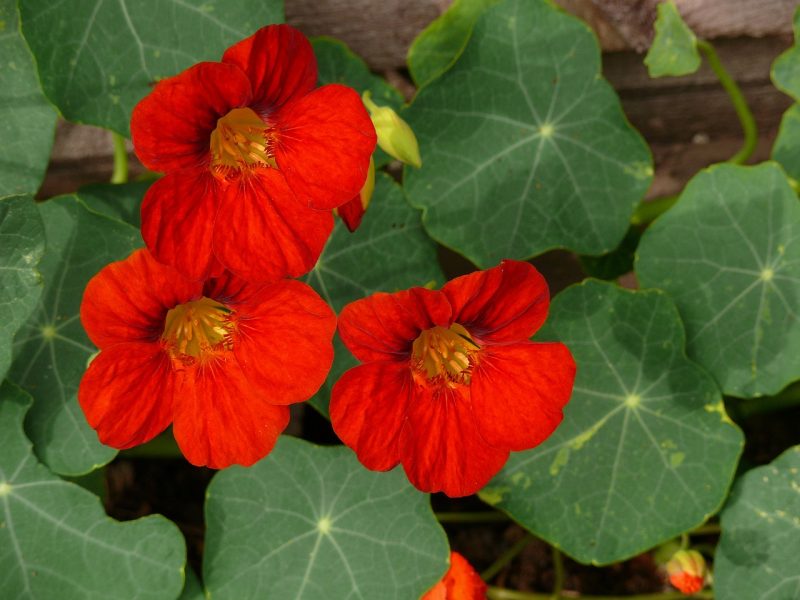
Nasturtiums are edible flowers that can be directly sown in the garden once the threats of frost are over in Zones 3-10. They thrive in poor soils and bloom in a vibrant array of colors, making them an aesthetic delight in gardens while being excellent edible additions.
Succession sowing every couple of weeks throughout May can extend the harvest of flowers and leaves. Directly consume the flowers in salads, or use the leaves for flavoring other dishes.
Dahlia
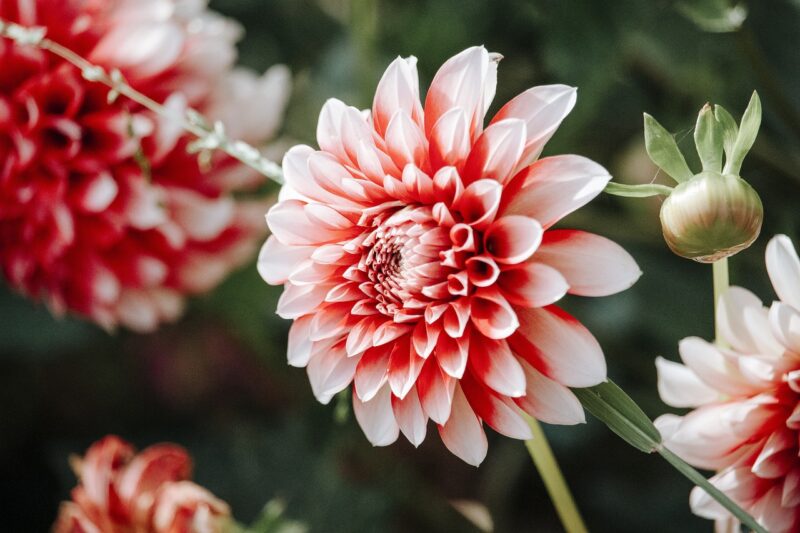
Dahlias are stunning garden additions grown from tubers planted in Zones 3-9. They require full sun and moist, nutrient-rich soil. Plant them once the soil has warmed above 60°F in May.
Consider staking taller varieties to prevent collapsing under rainfall. Regular watering and applying a balanced fertilizer during their growing season improves flower quality and promotes prolific blooming.
Geraniums
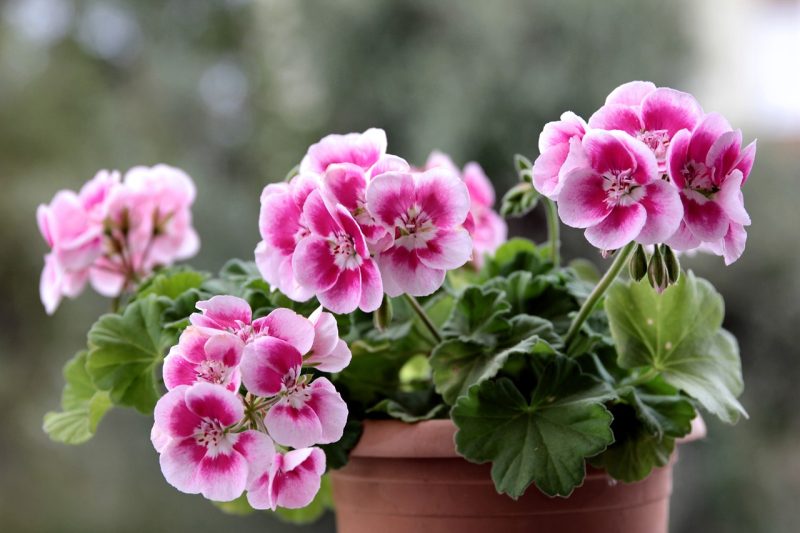
Geraniums are popular landscape plants adaptable in Zones 3-10, making them ideal for container plants and garden beds. They enjoy full sun and require well-draining soil for optimal growth.
Regular deadheading increases blooming, while ideally, they should be watered consistently but not overwatered. If they begin to bring pests like whiteflies or aphids, insecticidal soap can help keep them at bay.
Bleeding Heart
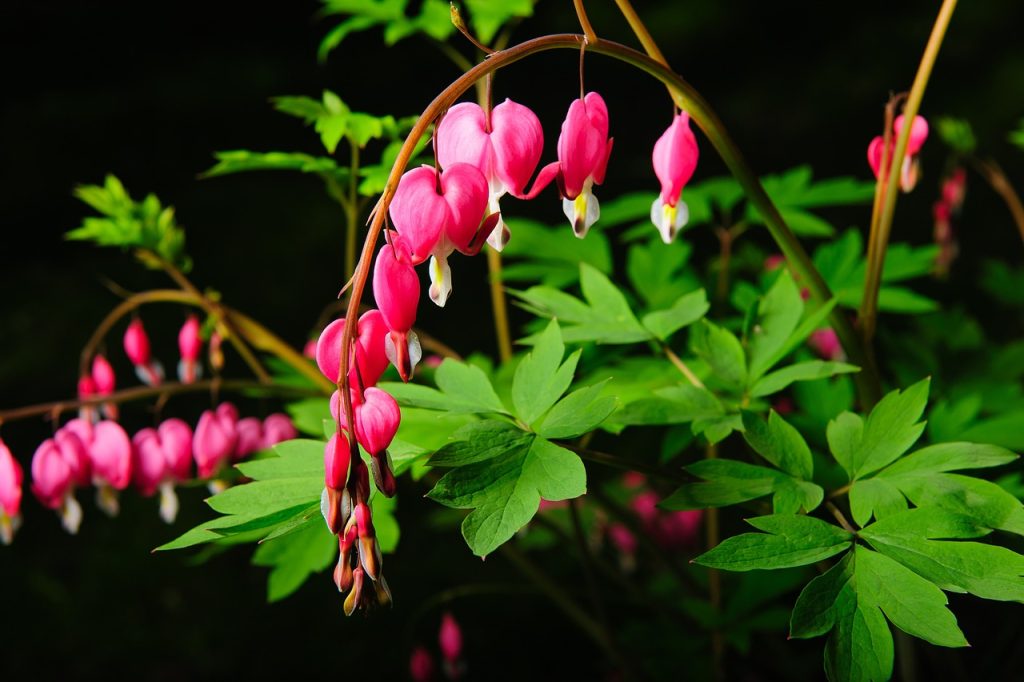
Ideal for shady areas, bleeding hearts blossom in unique shapes and thrive in Zones 3-9. They prefer well-drained, rich soil displaying adequate moisture, benefiting from morning sun and afternoon shade for ideal blooming.
Once established, these perennials can create stunning backdrops. Always maintain moisture around their roots to ensure healthy foliage and blooms; divide clumps every few years to rejuvenate their growth.
Echinacea
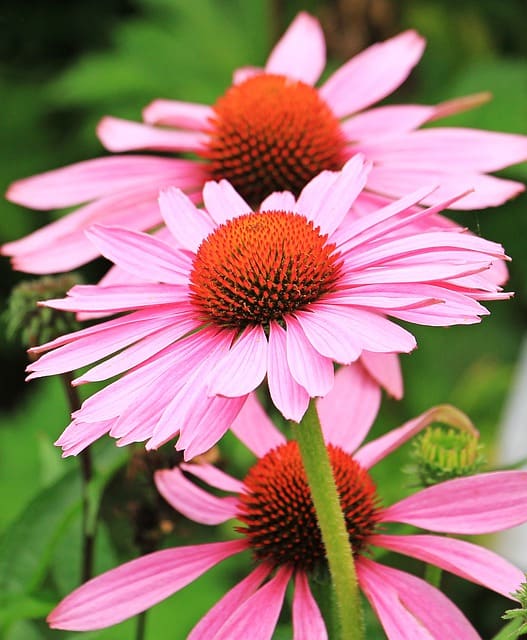
Plant echinacea (or coneflower) in Zones 3-9 in May for beautiful blooms and wildlife attraction. They thrive in drought conditions once established and grow best in full sun with well-draining soil.
Regularly deadheading spent blooms encourages additional flowering and maintains the plant’s aesthetic appeal. Plus, these flowers attract pollinators making them an excellent addition for eco-friendly gardens.
Dianthus
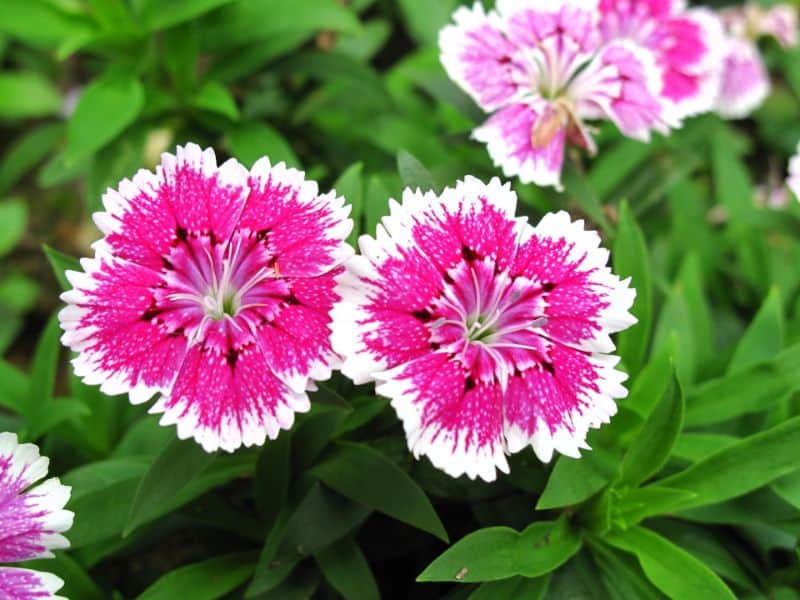
Dianthus plants are delightful spring bloomers that prefer well-drained soils and full sun. Ideal for planting in Zones 3-9 during May, these colorful flowers come in a variety of fragrant blooms and can attract butterflies.
Space them adequately apart—usually 10-12 inches—to prevent overcrowding. Regular deadheading helps to keep the flowers robust and encourages a stronger bloom through the summer months.
Asters
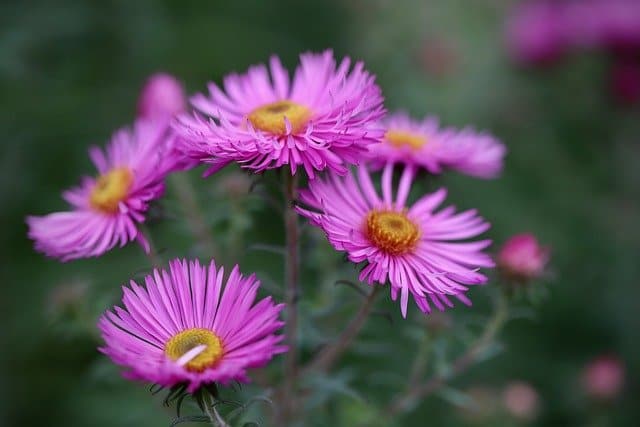
Asters make a stunning late-summer garden addition and can be planted in Zones 3-8 in May. They thrive in full sun and prefer well-drained soils. Regular deadheading promotes bushiness and ensures a plentiful bloom.
Asters often attract butterflies and bees, making them excellent allies in promoting biodiversity within your garden. Give them ample space so they won’t crowd each other later in the growing season.
Black-Eyed Susans
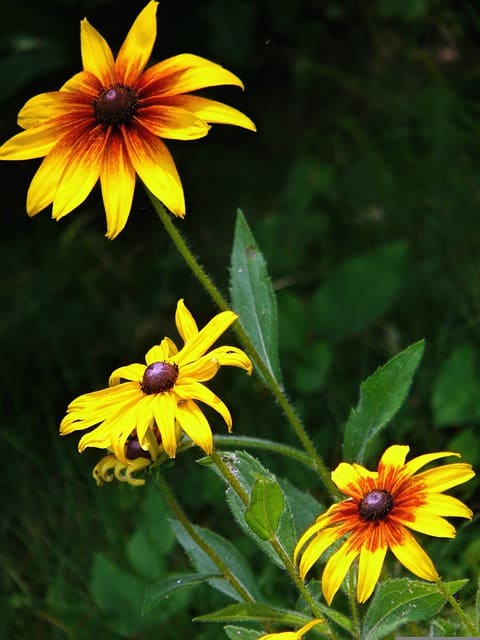
A native perennial, black-eyed Susans can be planted in Zones 3-9 during May. They thrive in full sun and are drought-tolerant once established. May is optimal for direct sowing or transplanting.
Plant these flowers in well-drained soil and consider staggering their planting across different areas to enjoy prolonged blooming throughout the summer. Deadheading periodically can enhance flowering longevity.
Foxglove
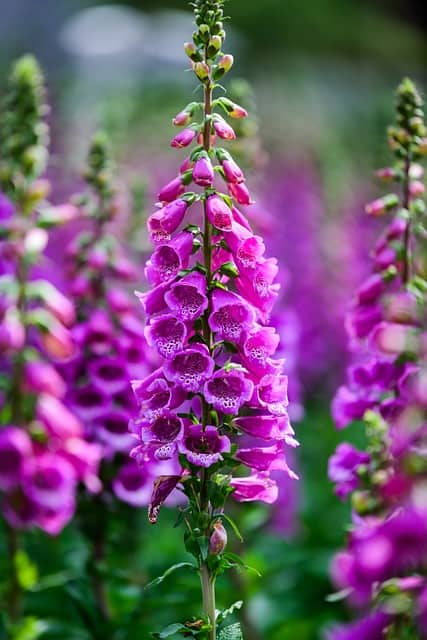
Foxgloves love cooler weather, and planting in May works well in Zones 4-8. They prefer filtered sunlight and well-drained soil, blooming tall flower spikes ideal for added height in your garden layout.
These perennial plants can spread quickly; consider spacing them 12-24 inches apart to ensure good air circulation between plants. Be mindful that all parts of foxglove contain toxic compounds, hence tears placed where children or pets might frequent should be avoided.
Salvia
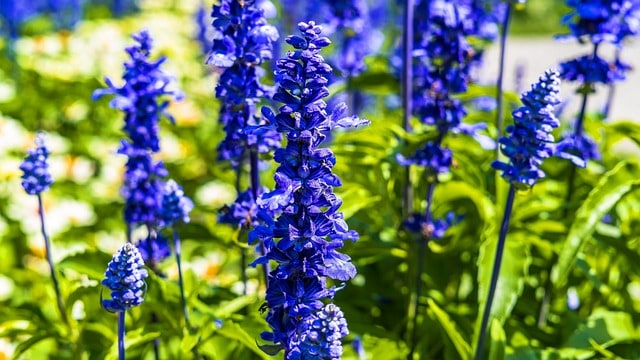
Salvia can be planted in May in Zones 4-10, thriving in dry conditions with a preference for full sun. These drought-resistant plants produce beautiful blooms that attract hummingbirds and pollinators into your garden.
Once established, salvia requires minimal watering. Trimming stems back after blooming can encourage a second flush of flowers, prolonging colorful displays through the late summer and early fall.
Cleome

Cleome, often called spider flower, is perfect for bouquets and attracts butterflies. Plant these annuals in Zones 3-10 during May. They thrive in full sun and prefer well-drained soil, which encourages their robust growth.
Providing adequate spacing is essential—typically around 12-18 inches apart—in your garden to allow air circulation. These plants can tolerate dry spells once established, making them easy-care annuals.
Lobelia
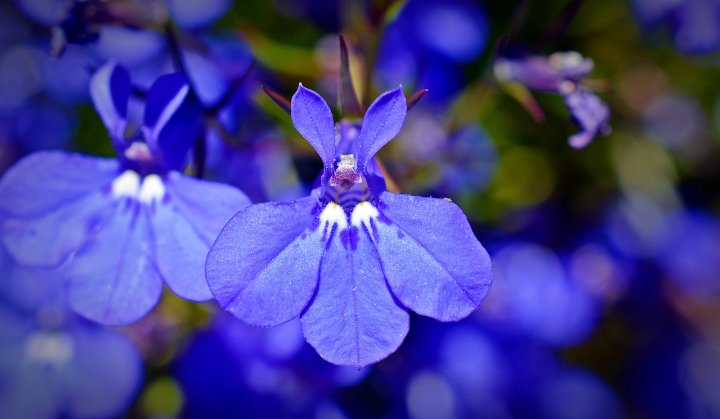
Lobelia blooms blue and purple hues throughout the summer and can be sown directly in the garden in May across Zones 3-9. They thrive best in cooler temperatures and prefer partial sun for optimal growth.
Regular watering is essential, and ensuring the soil remains moist can help them flourish—especially in containers or hanging baskets. Deadheading encourages continuous blooming, creating a striking display throughout the growing season.
Scabiosa
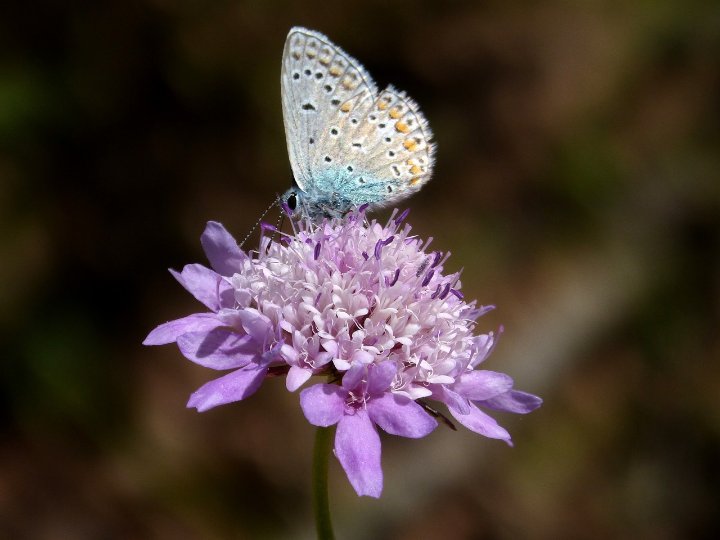
Scabiosa, or pincushion flowers, can be sown directly in Zones 3-8 in May. They thrive in well-drained soil and full sun, producing unique flower shapes that add texture and charm to gardens.
Light fertilization can support continuous blooming, and regular deadheading can extend the flowering period well into the fall. These flowers attract pollinators, contributing positively to your garden’s ecology.
Herbs To Plant
When it comes to herbs, May is an excellent month to add a wide variety of flavorful and aromatic plants. Planting herbs in May not only enhances your garden but also provides fresh ingredients for your culinary creations. Here are twenty herbs ideal for planting in May across USDA zones.
Basil
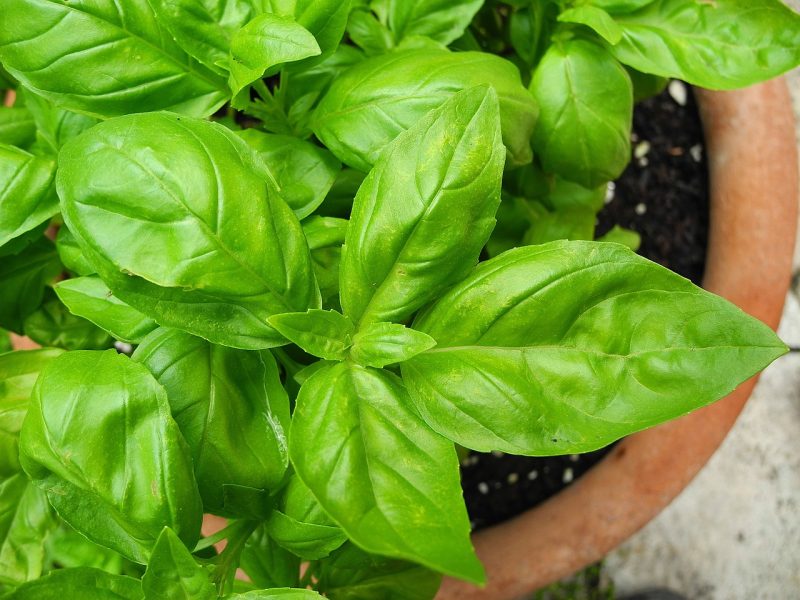
Basil thrives in warm weather, making it perfect for planting in May. It is suitable for Zones 4-10, loves full sun, and should be planted in well-drained soil after the threat of frost has passed, ideally when soil temperatures reach 70°F.
Regular harvesting encourages bushier growth; pinch off the top leaves to promote lateral growth. Basil can also benefit from companion planting with tomatoes, as both help deter pests while enhancing each other’s flavors in culinary dishes.
Cilantro
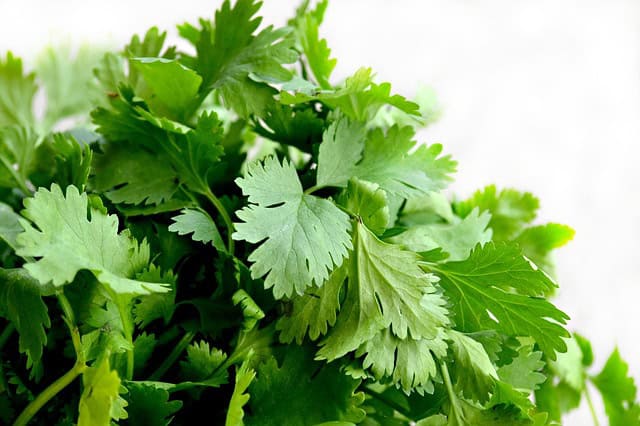
Cilantro can be planted in Zones 3-10 during May, preferring cooler seasons but adaptable to warmer early summer months. Sow seeds when the soil temperature is around 50°F, as they germinate best in such conditions and thrive with regular moisture.
Cilantro tends to bolt in hot weather; hence, consider succession planting every few weeks to ensure a consistent supply of leafy herbs. The flowers and seeds (coriander) can be used in various culinary applications.
Parsley
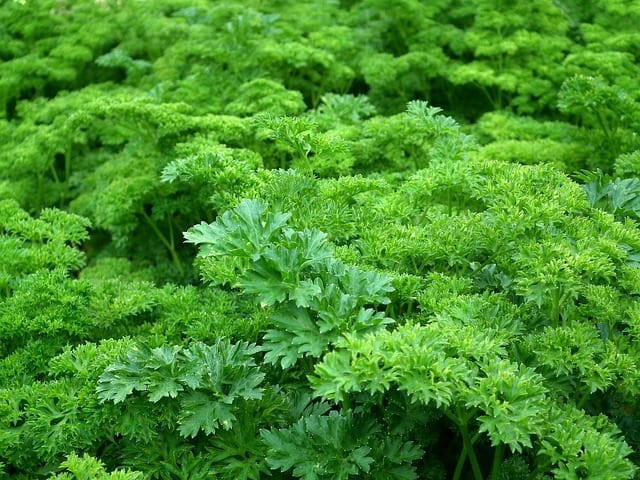
Parsley is a hardy biennial herb suitable for growing in Zones 3-9. It tolerates cooler temperatures, making May a great time to sow seeds directly into the garden or transplant established plants.
Plant parsley in rich, well-drained soil, and provide consistent watering. Regular harvesting promotes new leaf growth, ensuring an abundant supply throughout the season.
Chives
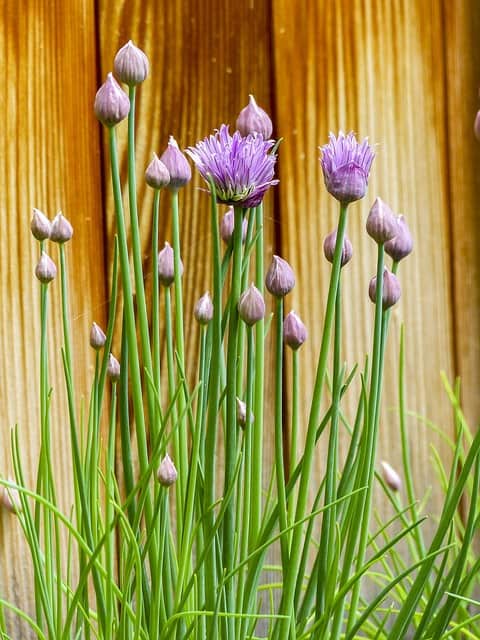
Chives are one of the easiest herbs to grow and can be planted in Zones 3-9 in May. They thrive in full sun or partial shade and are drought-tolerant once established, making them ideal for various garden settings.
Regular trimming encourages bushiness while harvesting fresh chives for culinary use adds subtle onion flavor to dishes. Chives can also be planted in pots for convenient access in the kitchen.
Oregano
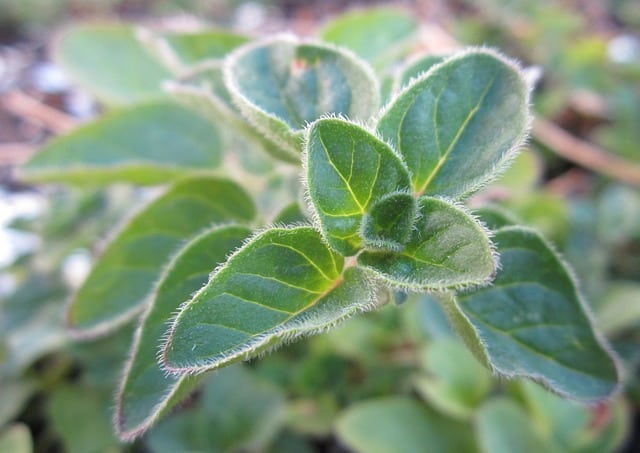
Oregano loves well-drained soil and full sunlight, making it ideal for planting in May in Zones 5-10. This herb adds robust flavor to Italian dishes and thrives best when planted in soil enriched with compost for nutrient diversity.
Regular harvesting encourages continuous growth, and you can dry excess leaves for culinary use later. Oregano can thrive in drier conditions and is remarkably resistant to pests, which enhances its appeal for low-maintenance gardens.
Thyme
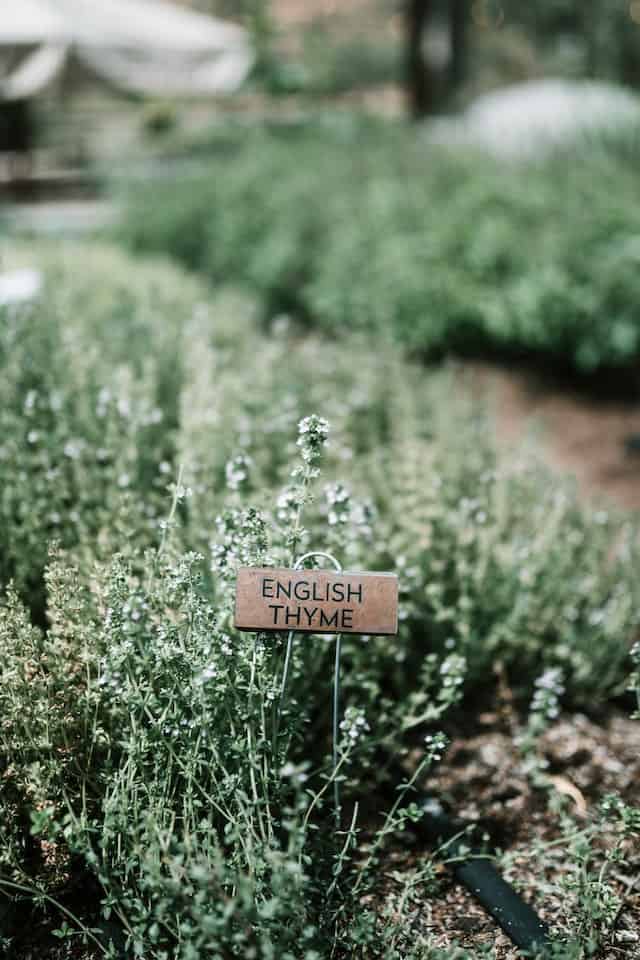
Thyme is a hardy perennial suitable for Zones 3-9. Plant in May when temperatures are warm; it grows best in full sun and prefers light, well-drained soil, offering culinary versatility in numerous dishes.
Consistent pruning keeps thyme plants bushy and productive. During dry periods, be cautious not to overwater; thyme prefers well-drained conditions and is drought-resistant once established.
Rosemary
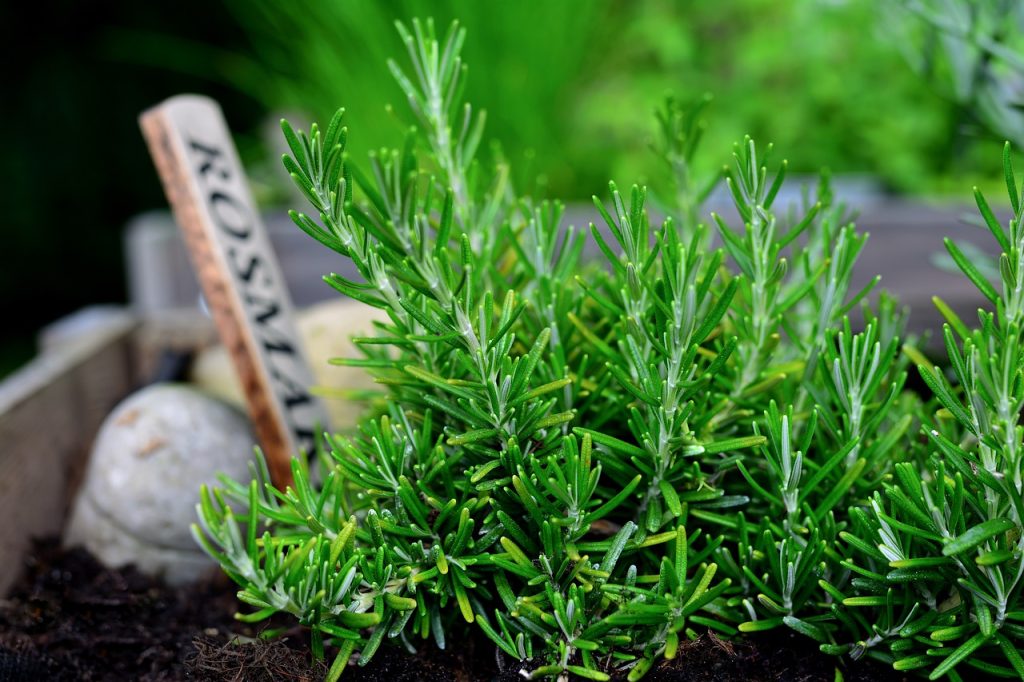
Rosemary, a Mediterranean herb, thrives in hot temperatures and is well-suited for Zones 7-10 when planted in May. It prefers full sun and good drainage, making it perfect for gardens with sandy or rocky soils.
Regular pruning encourages bushy growth and keeps the plant healthy. Rosemary can also be grown in pots if you lack well-drained garden beds, and its aromatic leaves provide numerous culinary uses throughout the year.
Dill
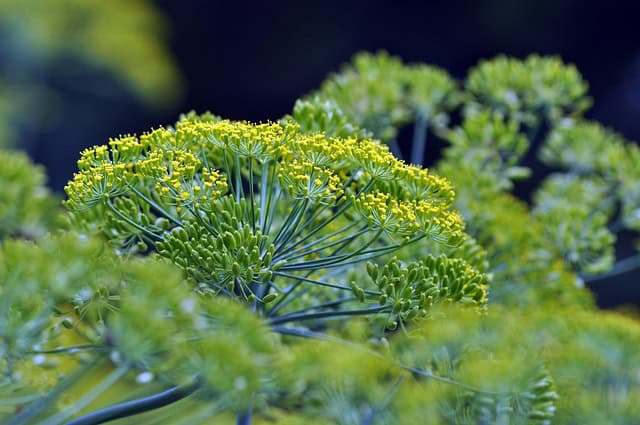
Dill grows quickly and can be directly sown in the garden in Zones 3-10. Plant in May for use in culinary applications such as pickling and flavoring dishes, preferring full sun and moderately rich soil for optimal growth.
Dill tends to grow tall; thus, consider providing some support or planting them in less windy areas. Succession planting ensures a continual harvest throughout the growing season, making dill a versatile herb to have on hand.
Sage
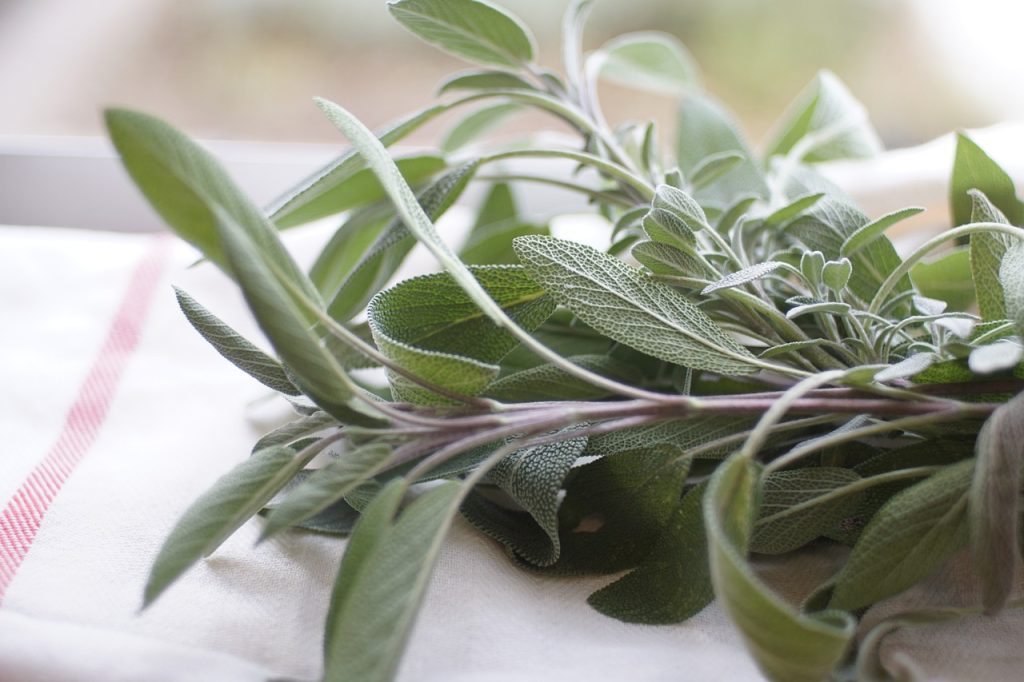
Sage thrives in dry, sunny environments and is suitable for Zones 4-10. Sow seeds in May in well-drained soil, and provide proper spacing, as mature plants can spread. Sage can enhance flavor in various savory dishes, making it a favorite culinary herb.
Regular harvesting of leaves is necessary to encourage the growth of new foliage. Consider planting sage in a location sheltered from harsh winds to promote robust plant health.
Fennel
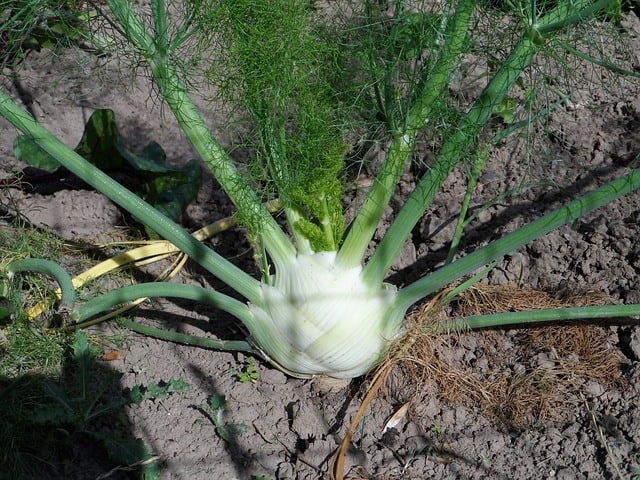
Fennel grows well in Zones 4-10 and can be directly seeded in May. It prefers full sun and well-drained soil; ensure to provide consistent watering as fennel can easily become stressed in dry conditions.
Fennel is often cultivated both for its bulb and seeds; harvesting it at the right time—when the bulb is sufficiently large—is crucial for culinary use. When permitted to flower, fennel produces beautiful blooms and attracts diverse pollinators.
Mint
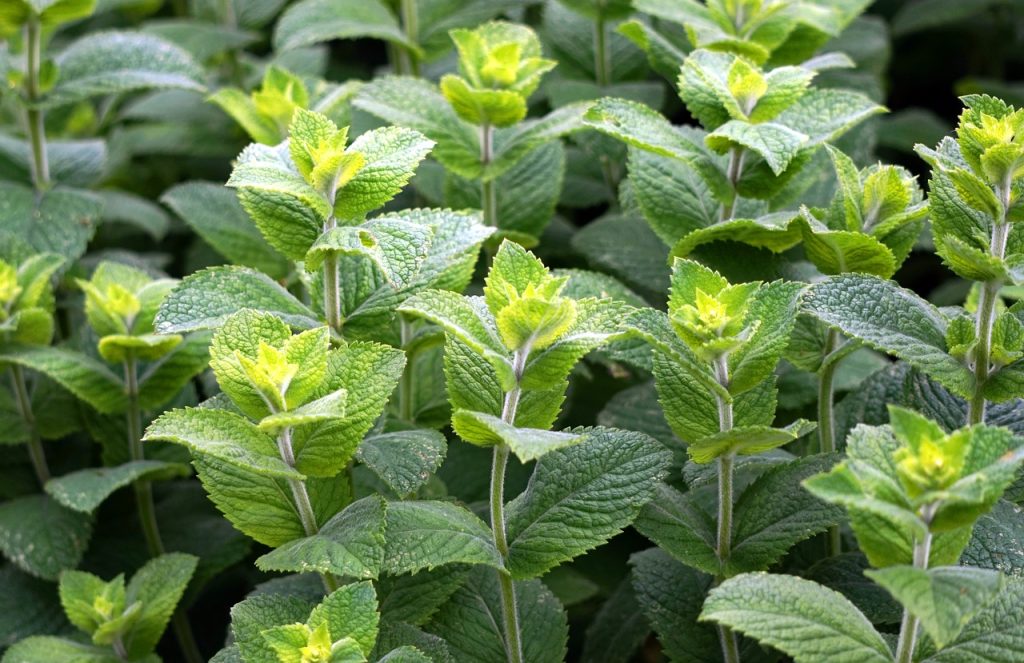
Mint can be planted in Zones 3-10 but should be contained in pots or confined spaces, as it has a tendency to spread rapidly and can become invasive. May is a great time for planting mint in well-drained soil with some shade, allowing it to flourish.
Regular harvesting encourages vigorous growth; use mint fresh in beverages or cooking or dry the leaves for later use. Be cautious of pests such as aphids, which can occasionally inhabit mint plants.
Tarragon
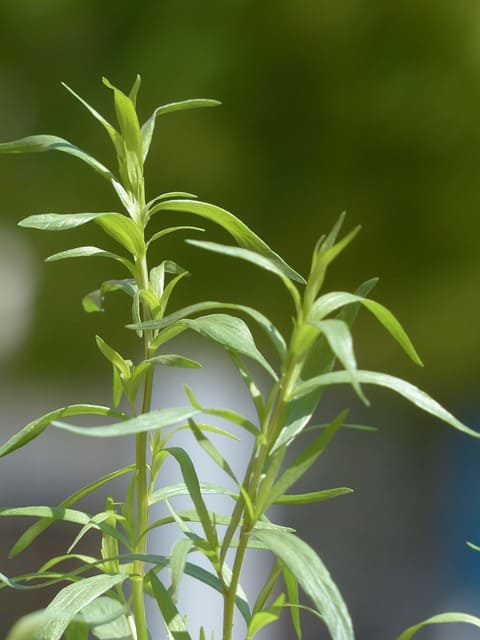
French tarragon can be grown in Zones 3-7 and is often planted in May. It prefers well-drained soil and a sunny spot, enriching the flavors of culinary dishes throughout the season.
Consider growing tarragon in pots to contain its growth, as it can spread similarly to mint if not carefully controlled. Harvest regularly to keep the plant productive and support new growth.
Lemon Balm
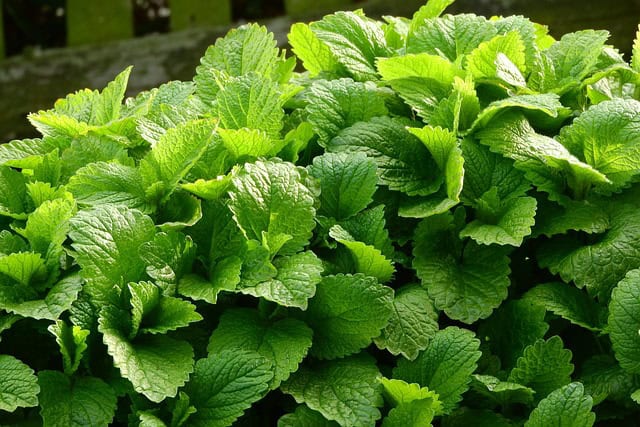
Lemon balm enjoys full sun and can be started in May across Zones 4-9. This herb is relatively pest-resistant and thrives in various soil types, making it easy to cultivate and providing refreshing flavors for teas or salads.
Regular harvesting promotes bushiness, while its ability to repel certain pests makes it a beneficial addition to the garden. Lemon balm can also experience rapid growth; thus, periodic trimming is advisable to maintain control.
Chamomile
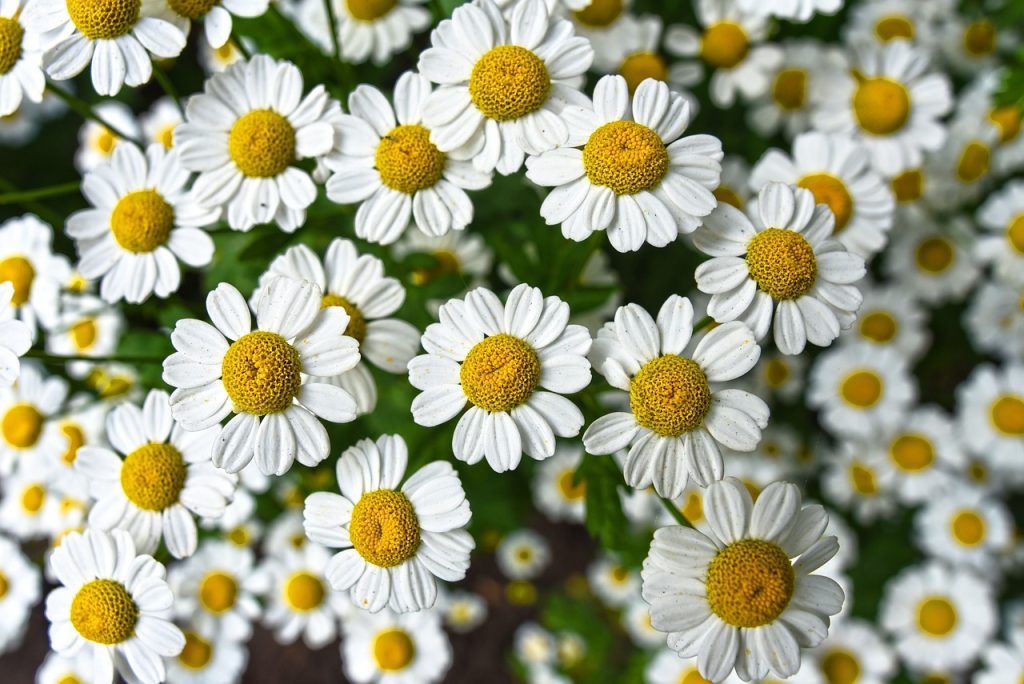
Chamomile can be sown directly in the garden in May across Zones 3-8. It thrives in full sun and tolerates poorer soils while providing fragrant flowers ideal for tea and relaxation.
Look for German or Roman varieties; both have culinary and medicinal uses. Harvest the flowers before they fully open to make the most potent herbal tea. Chamomile can self-seed, producing new plants in following growing seasons.
Bay Leaf
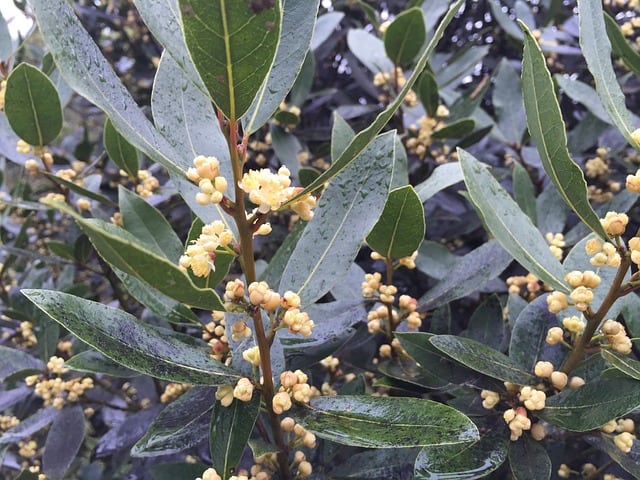
Bay leaf trees can be propagated and planted in May in Zones 8-10. This aromatic herb offers culinary uses and is cherished for its flavor-enhancing properties.
Consider planting bay trees in larger containers as they can grow quite large; ensure they have well-draining soil and plenty of sunlight. Bay leaves can be harvested year-round, and their flavor intensifies the longer they are dried.
Lovage
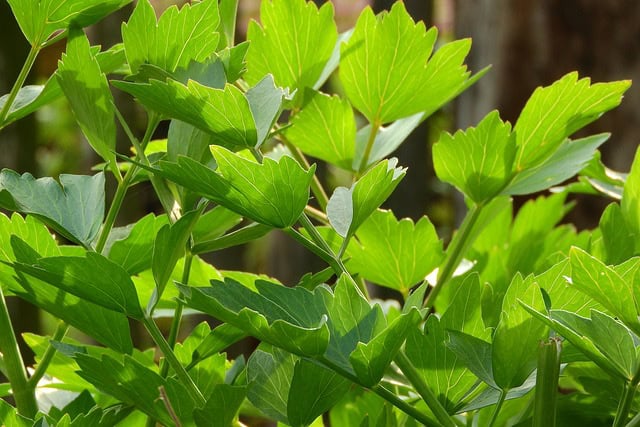
Lovage can be grown in Zones 4-9, making it a compatible herb to plant in May. This tall herb with a celery-like flavor needs space and full sunlight to flourish.
Regular harvesting prevents it from bolting, encouraging fresh growth. Lovage can be used in soups, stews, and salads, providing a unique flavor that enhances various culinary creations.
Sorrel
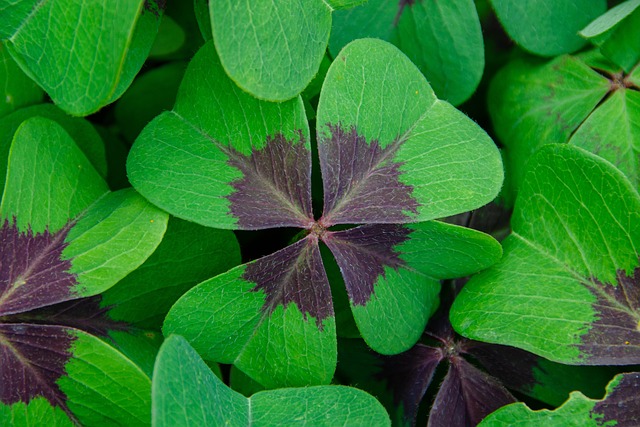
Sorrel thrives in cooler seasons and can be planted in Zones 4-8 in May. This herb prefers partial shade and moist soil, providing a tangy flavor ideal for salads or soups.
Regular harvesting encourages new leaf production, ensuring you have a continual supply of this unique herb. Sorrel can also be propagated through division; consider expanding your sorrel patch in subsequent years easily.
Garlic
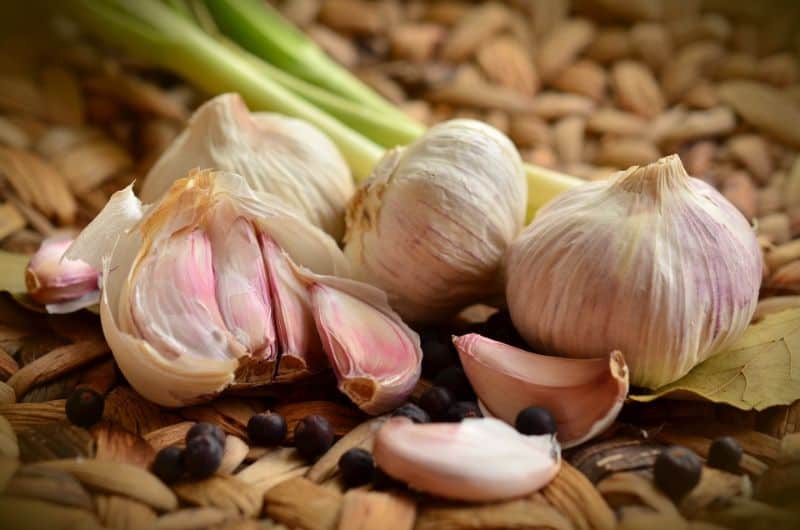
Garlic should ideally be planted in the fall, but if you missed that window, planting cloves in May in warmer Zones 8-10 can yield harvests. Ensure garlic is tucked into well-draining soil with ample sunlight to foster strong root development.
Regular moisture checks are necessary until harvest time. Garlic can be harvested mid-summer based on its growth; look for yellowing tops indicating it’s ready to be pulled from the soil.
Cress
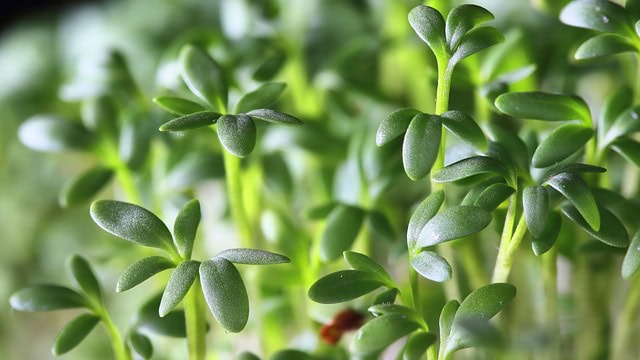
Cress seeds can be sown directly in the garden in May across Zones 3-10. This fast-growing herb prefers cool, moist conditions, making it easy to grow in various types of soil.
Harvest regularly to encourage fresh growth; it can be used fresh in salads or as a garnish, offering a peppery flavor. Cress is also suitable for container gardening, ensuring you can grow it even in limited space.
Summer Savory
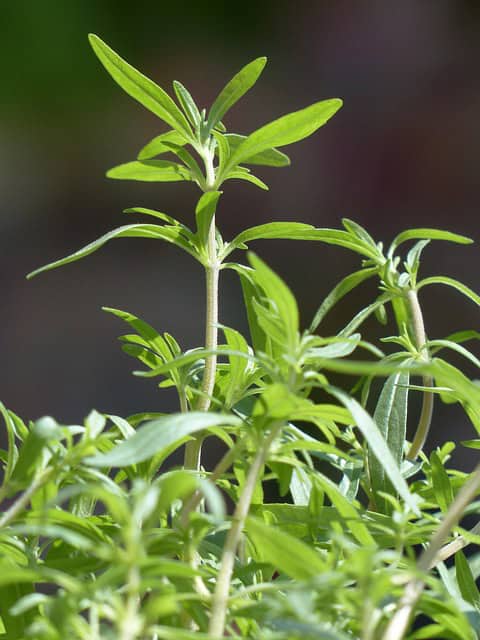
Summer savory grows well in Zones 2-10, making it suitable for May planting. It prefers full sun and well-draining soil, enhancing flavors in legume dishes and meats.
Regular pruning during the growing season helps maintain plant size and vigor. Additionally, consider planting savory as a companion plant in your garden, as it can repel harmful pests and enhance overall growth.
FAQ
What should I consider before planting seeds in May?
Before planting, consider your USDA zone, local climate conditions, and the frost dates in your area. Be sure to check soil temperature and moisture levels for successful seed germination. This attention to detail will help ensure your garden thrives.
Can I start seeds indoors for planting later?
Yes! Many gardeners start seeds indoors in early spring to get a head start. Just make sure to harden off seedlings gradually before transplanting them outdoors after the last frost date. Hardening off involves exposing seedlings to outdoor conditions for a few hours a day, gradually increasing their time outdoors.
How often should I water newly planted seeds?
Water newly planted seeds gently but consistently, ensuring they have adequate moisture to germinate. Avoid overwatering, as this can lead to rot. A light misting or gentle watering can help keep the soil damp without compacting it.
What plants are best for attracting pollinators?
Bright-colored flowers like sunflowers, zinnias, and cosmos attract bees and butterflies. Incorporating these plants into your garden layout not only enhances visual appeal but also supports local pollinators, crucial for your garden’s health and productivity.
Are there any plants that I should not plant in May?
Some plants prefer cooler spring weather and should be planted earlier. For example, spinach and peas are best sown in early spring instead of May. Pay close attention to your local climate and tradition, as it influences successful spring planting.
How can I prepare my soil for planting?
To prepare your soil, clear any debris, and amend it with compost or organic matter to increase fertility. Loosen the soil and ensure good drainage to provide an optimal growing environment. Testing your soil’s pH and nutrient levels can also help inform what amendments or soil types you might need.


